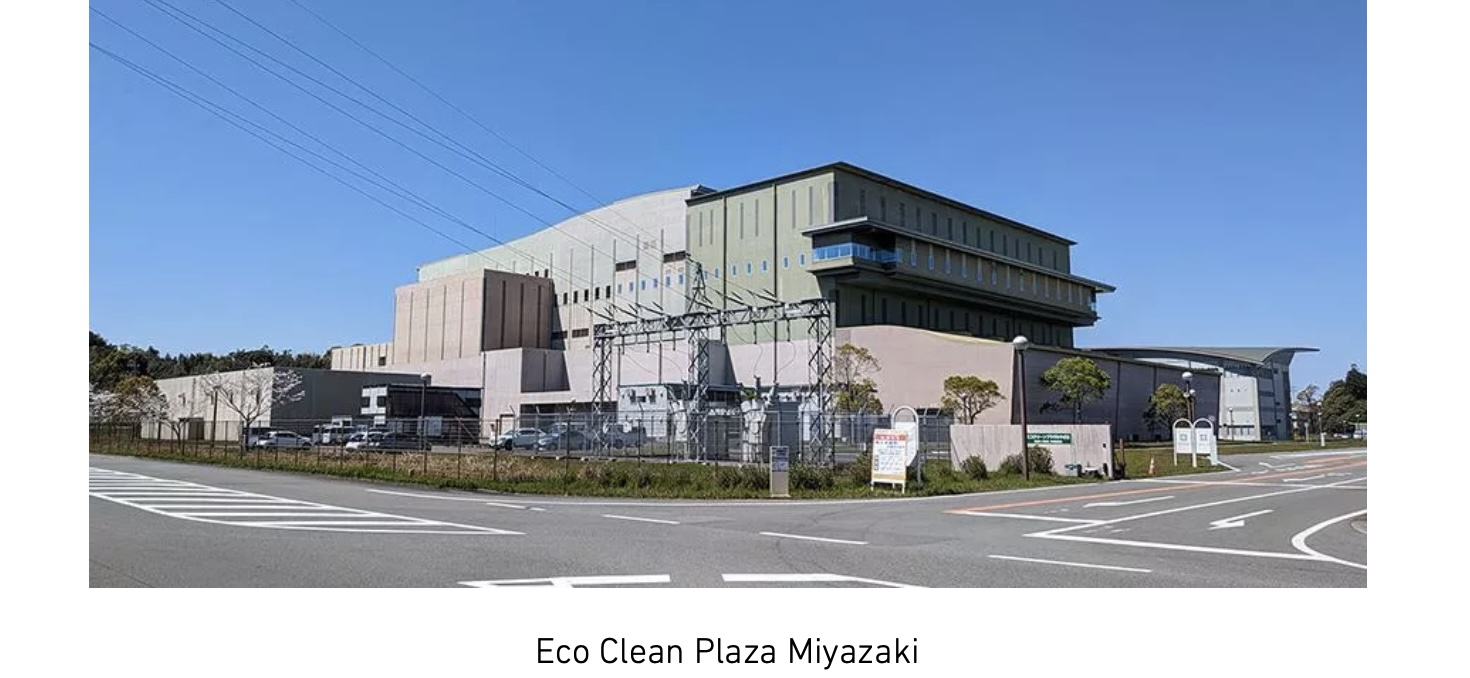
TOKYO, Apr 9, 2025 - (JCN Newswire) - Mitsubishi Heavy Industries Environmental & Chemical Engineering Co., Ltd. (MHIEC), a part of Mitsubishi Heavy Industries (MHI) Group, has completed refurbishment of the core facilities of Eco Clean Plaza Miyazaki, a waste-to-energy plant in Miyazaki city in southern part of Kyushu. The refurbishment work, which was ordered in 2021, took place over a four-year span from FY2021 through FY2024. The refurbishment, enabling a waste treatment capacity of 579 tonnes per day (tpd), has extended the plant's service life and achieved reduction in CO2 emissions.
Eco Clean Plaza Miyazaki encompasses facilities not only for waste incineration but also recycling and final waste management. It treats waste from Miyazaki city as well as nine nearby localities. The incineration facilities were designed and constructed by MHI and completed in October 2005. They incorporate three stoker type incinerators(Note1) each having a waste treatment capacity of 193 tpd, and related facilities. Power generation capacity using waste heat is 11,200 kW.
Under the refurbishment work, upgrades have been made to major equipment superannuated after more than 15 years in operation, to achieve stable combustion and operation over the long term. Replacements include equipment involved in combustion, cooling of combustion gas, waste gas treatment, waste heat utilization, ventilation, and ash removal, as well as electrical instrumentation. Plant service life extension work was carried out adopting MHIEC's proprietary new combustion control system. Stable combustion has been realized with a lower air ratio(Note2) than previously.
A CO2 reduction rate of 31.86%(Note3) was attained, significantly higher than the original 17.25% target. Factors contributing to the higher rate include: replacement to a feeder and boiler piping that enable higher durability responding to the low air ratio; increased power generation making efficient use of waste steam, achieved by changing to a low-temperature denitration catalyst; and the compound effects of adopting high-efficiency motors, converting to inverter type equipment, and optimization of plant equipment.
The refurbishment work was difficult because it had to be undertaken amid continuing waste treatment, and because it coincided with the spread of the coronavirus pandemic. Nevertheless, work proceeded on schedule thanks to the further strengthening of coordination with all relevant counterparts and meticulous care exercised throughout, enabling the project to be successfully completed on time.
MHIEC succeeded MHI's environmental protection business in 2008, taking over its accumulated technological development capabilities in environmental protection systems and abundant expertise in the construction, operation, and maintenance of waste management facilities both in Japan and overseas. Based on this robust track record, the company is well positioned to propose comprehensive solutions encompassing all aspects from plant construction to operation and maintenance. Going forward, the Company will continue proactively proposing solutions for extending the service life of existing waste treatment facilities, coping with global warming, and reducing maintenance, management and other lifecycle costs, to contribute to realization of a carbon neutral society.
1A stoker furnace is the main type of waste-to-energy plant. Air is supplied from below a fire grate made of heat-resistant castings to propel the materials to be burned (waste, etc.).2Air ratio is calculated by dividing the real volume of air fed into the incinerator by the theoretical minimal amount of air necessary for waste combustion.3CO2 reduction rate based on the Ministry of the Environment's published material.
Overview of Eco Clean Plaza Miyazaki Incineration Plant
| Treatment capacity |
579 tonnes per day (193 tpd x 3 units) |
| Treatment method |
Incineration (stoker type) |
| Power generation capacity |
11,200 kW |
About MHI Group
Mitsubishi Heavy Industries (MHI) Group is one of the world’s leading industrial groups, spanning energy, smart infrastructure, industrial machinery, aerospace and defense. MHI Group combines cutting-edge technology with deep experience to deliver innovative, integrated solutions that help to realize a carbon neutral world, improve the quality of life and ensure a safer world. For more information, please visit www.mhi.com or follow our insights and stories on spectra.mhi.com.